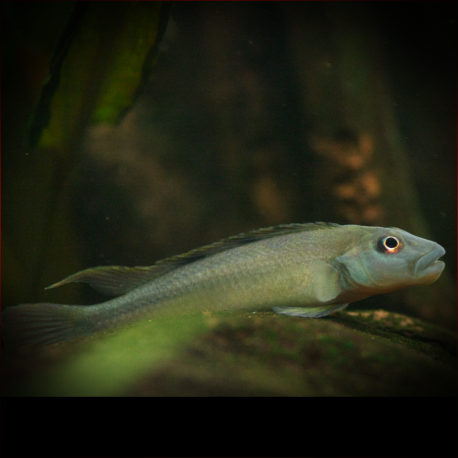More info
Datasheet
| Minimum Tank Size | 80 litres / 21.13 US gallons |
| Maximum Size | 13.0cm / 5.12inches |
| Temperature | 25°C / 77.00°F - 28°C / 82.40°F |
| Hardness | 5-19ºdH |
| pH | 6.0-7.5 |
General Description
Steatocranus Tinanti, also known as S. casuarius, is a cichlid species originating from the Democratic Republic of Congo, specifically around the Malebo Pool in the River Congo. This species has had a complex taxonomic history, previously classified in different genera before settling under the Steatocranus genus. S. Tinanti is a reophilic fish, adapted to fast-flowing waters, with unique physical and behavioral traits that set it apart from other members of its genus.
Aquarium Setup
For housing S. casuarius, an aquarium with a minimum size of 80 liters (see table) is required. The tank should have a sandy substrate to accommodate the fish's digging behavior, as they tend to create caves and tunnels under decorations. Rocks arranged to form secure caves, driftwood, and robust plants like Anubias can be included in the setup. Strong water flow and aeration are essential, with the recommendation of a small powerhead for oxygenation. Additionally, providing quiet areas with low currents is beneficial for the fish to establish territories.
Behaviour
S. casuarius is a territorial species that should ideally be kept in pairs, and a larger tank is necessary if multiple pairs are housed together. Suitable tankmates include certain tetras, catfish species like Chaetostoma sp. and Chiloglanis sp., as well as larger characins and barbs. However, it is advised not to keep S. casuarius with other cichlids unless the tank is exceptionally large and with compatible non-aggressive species.
Feeding and Diet
In terms of diet, S. casuarius readily accepts dried pellets or flakes but should be supplemented with live and frozen foods like bloodworms and brine shrimp. This diverse diet ensures the fish receive essential nutrients and helps mimic their natural feeding behaviors.
Reproduction & Dimorphism
Reproduction in S. casuarius is achievable in a community setup, although a species tank is preferred for breeding. The male selects a cave for spawning, where the female lays eggs that hatch in about 5-7 days. The fry become free-swimming in 11-14 days, and the male exhibits extensive brood care and defends the offspring. Male S. casuarius are larger than females, with elongated dorsal and anal fins, as well as a noticeably enlarged head.
Habitat and Distribution
In the wild, S. casuarius inhabits rapids and turbulent waters, typically near shorelines where they excavate shallow pits. Their natural habitat in the Democratic Republic of Congo reflects their preference for fast-flowing river conditions. Water parameters for captive environments should match their natural habitat, with temperatures ranging from 25-28°C, a pH of 6.0-7.5, and moderate hardness of 5-19°dH.

